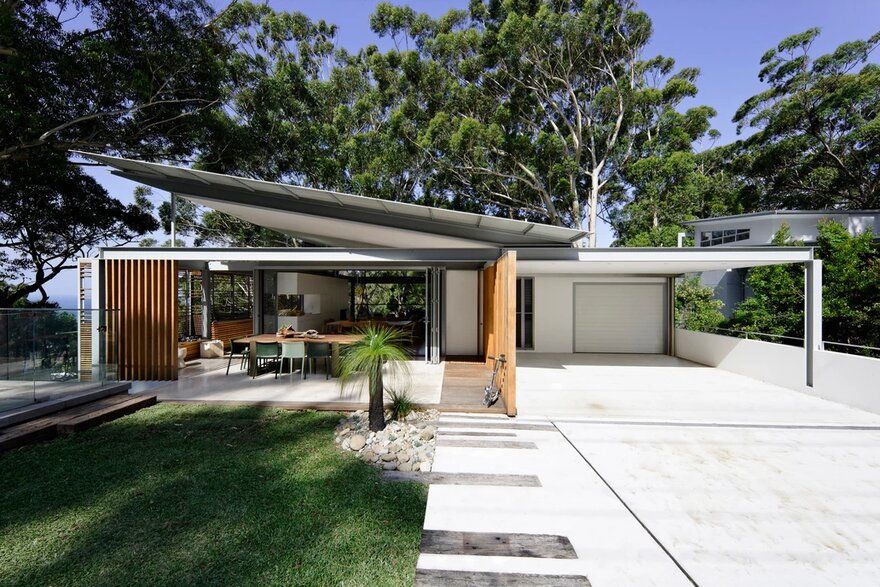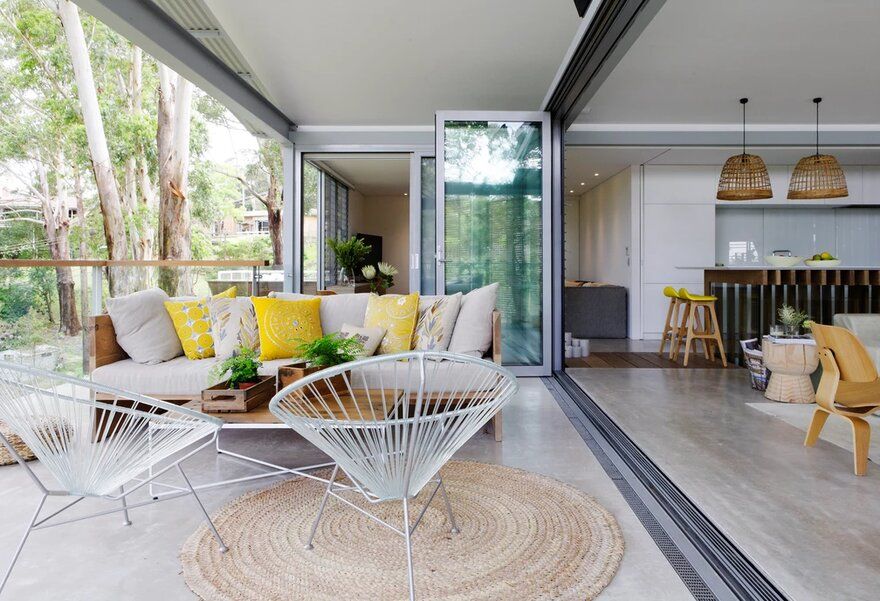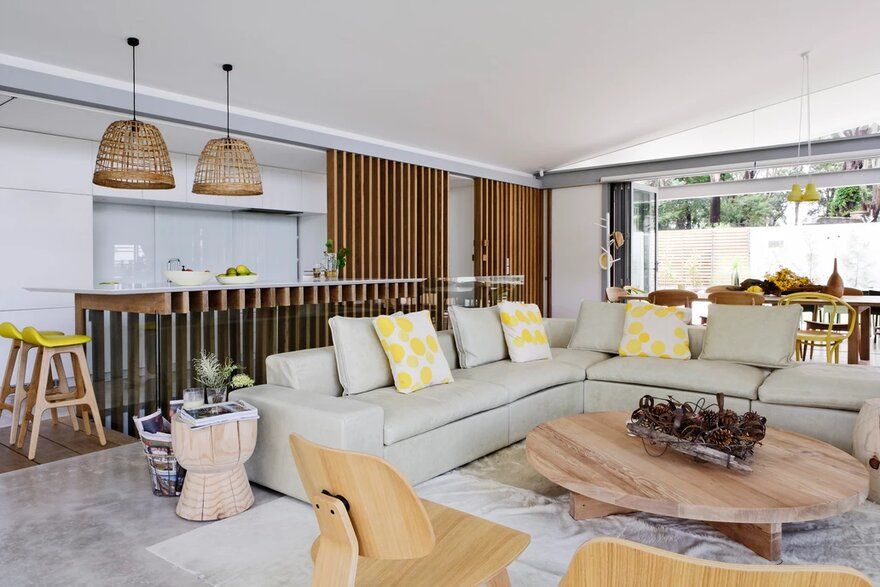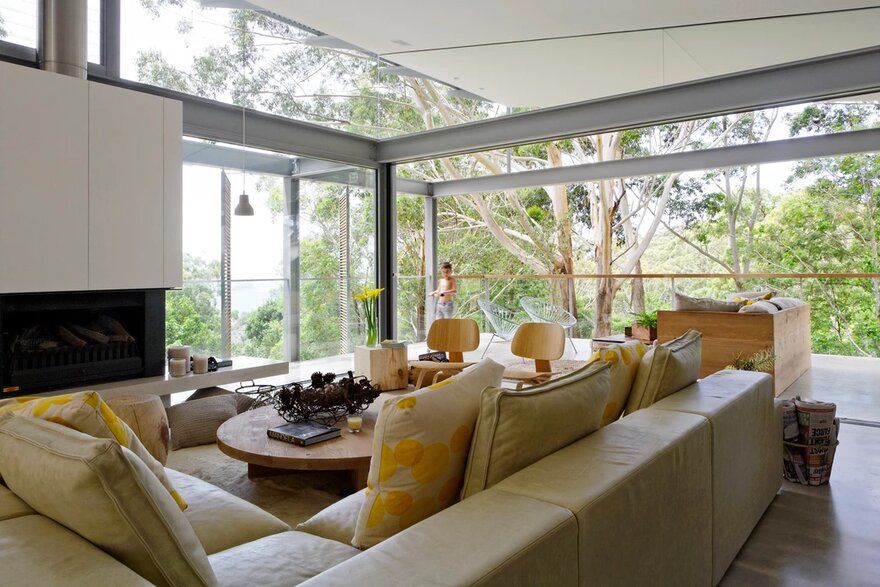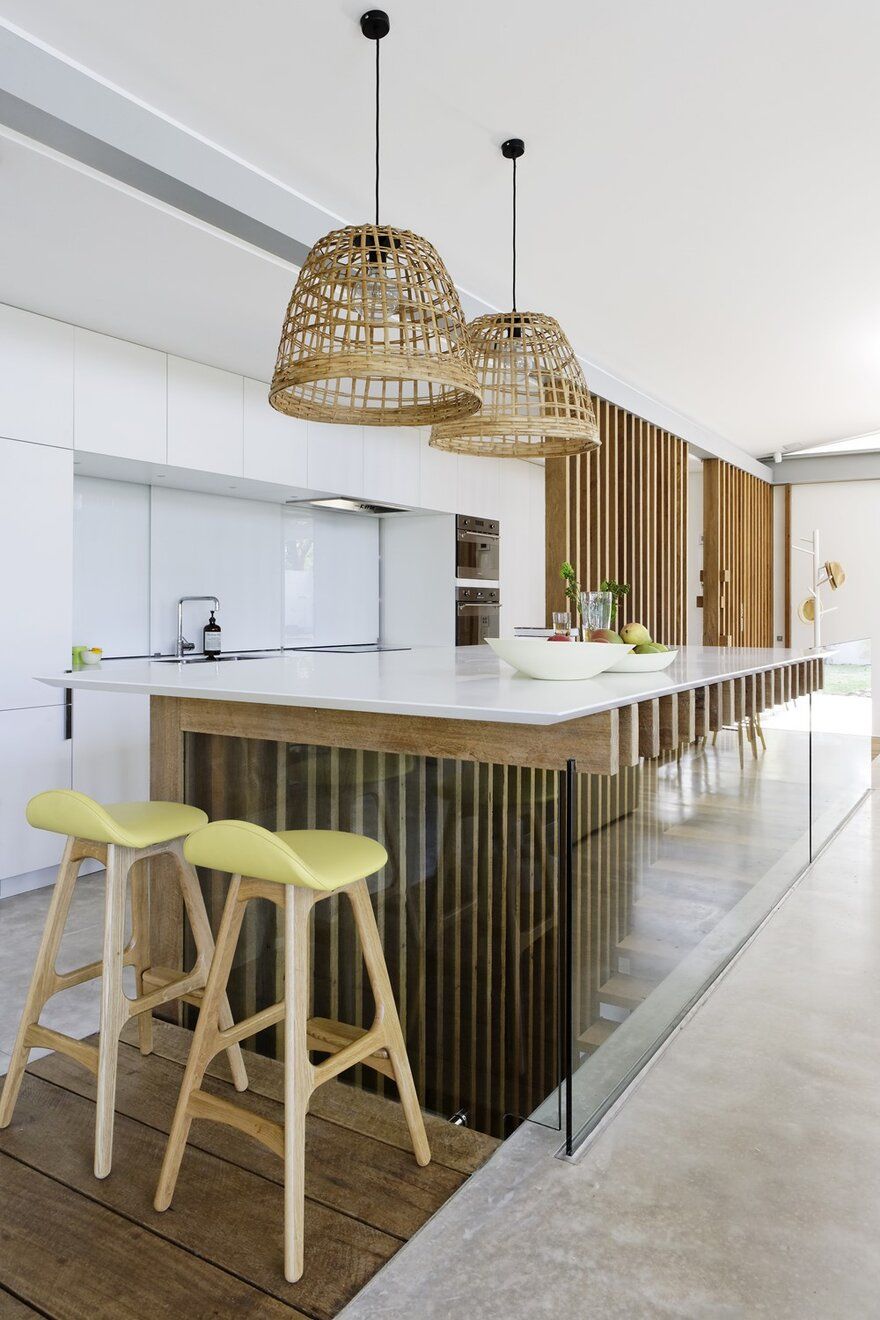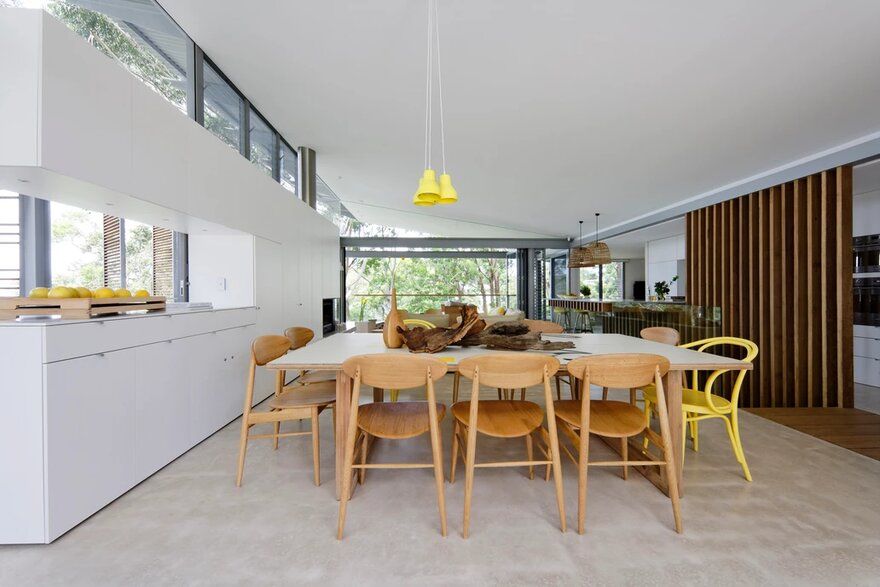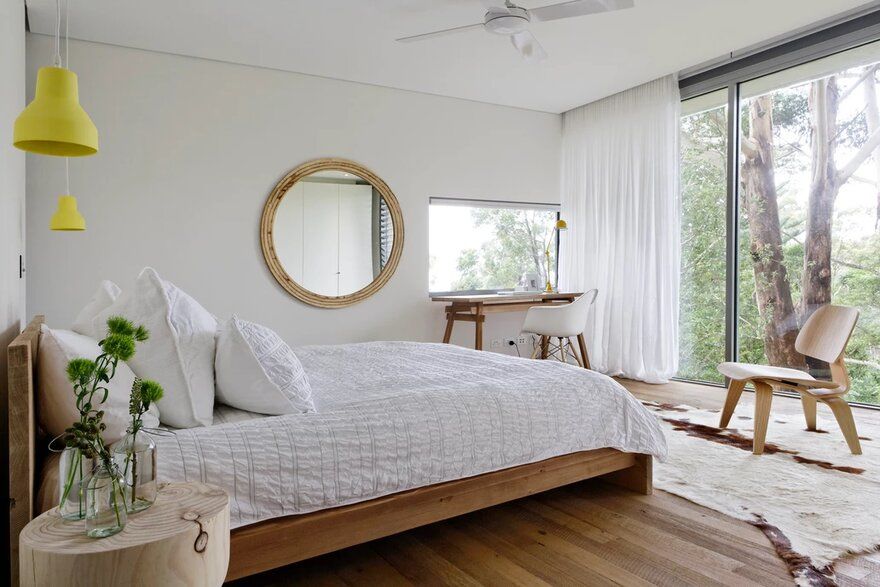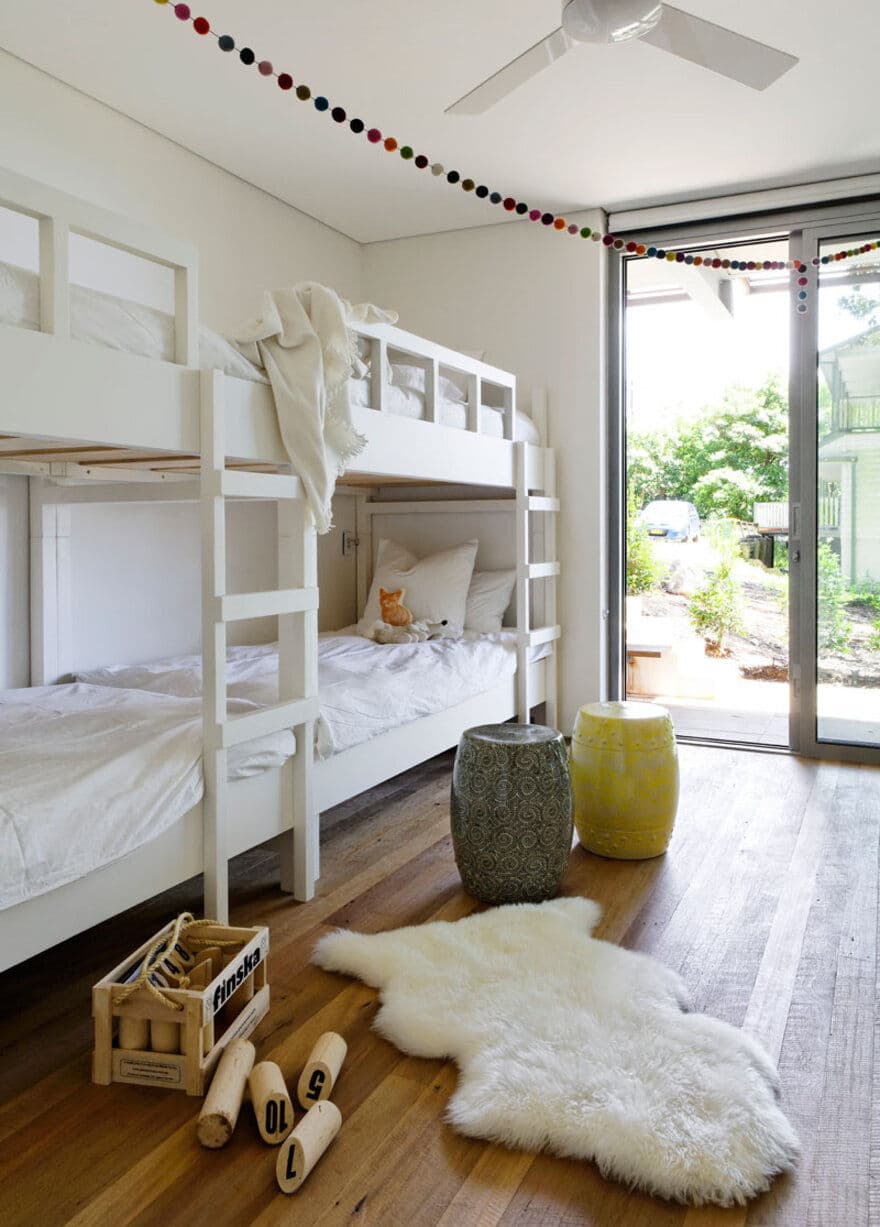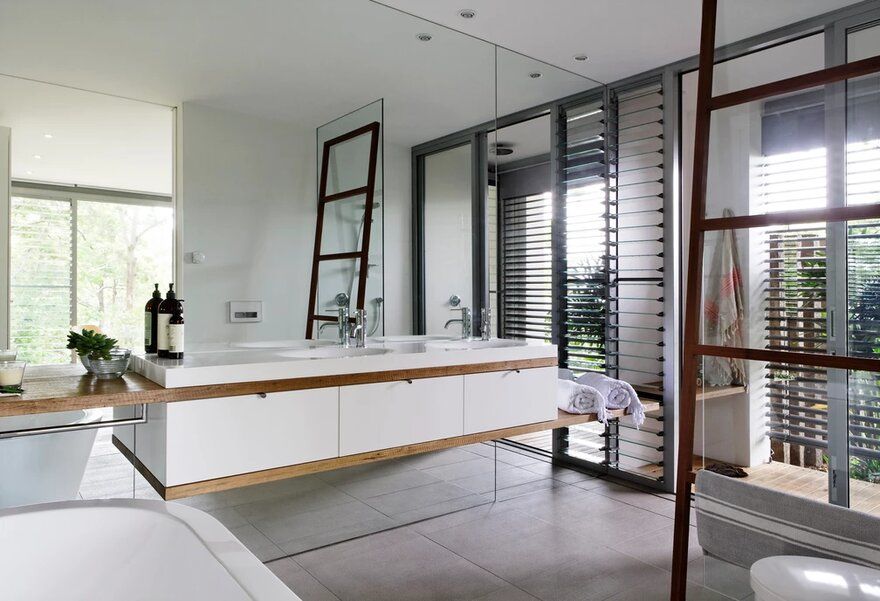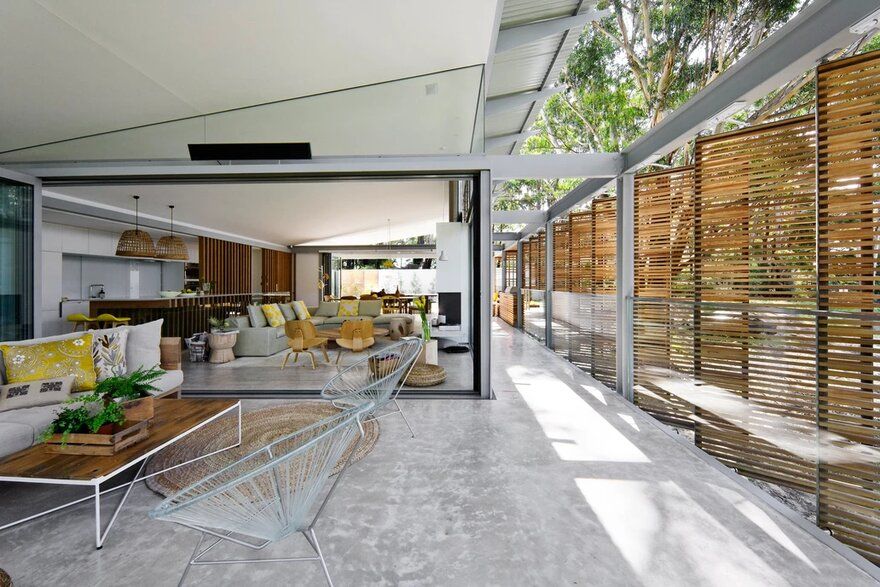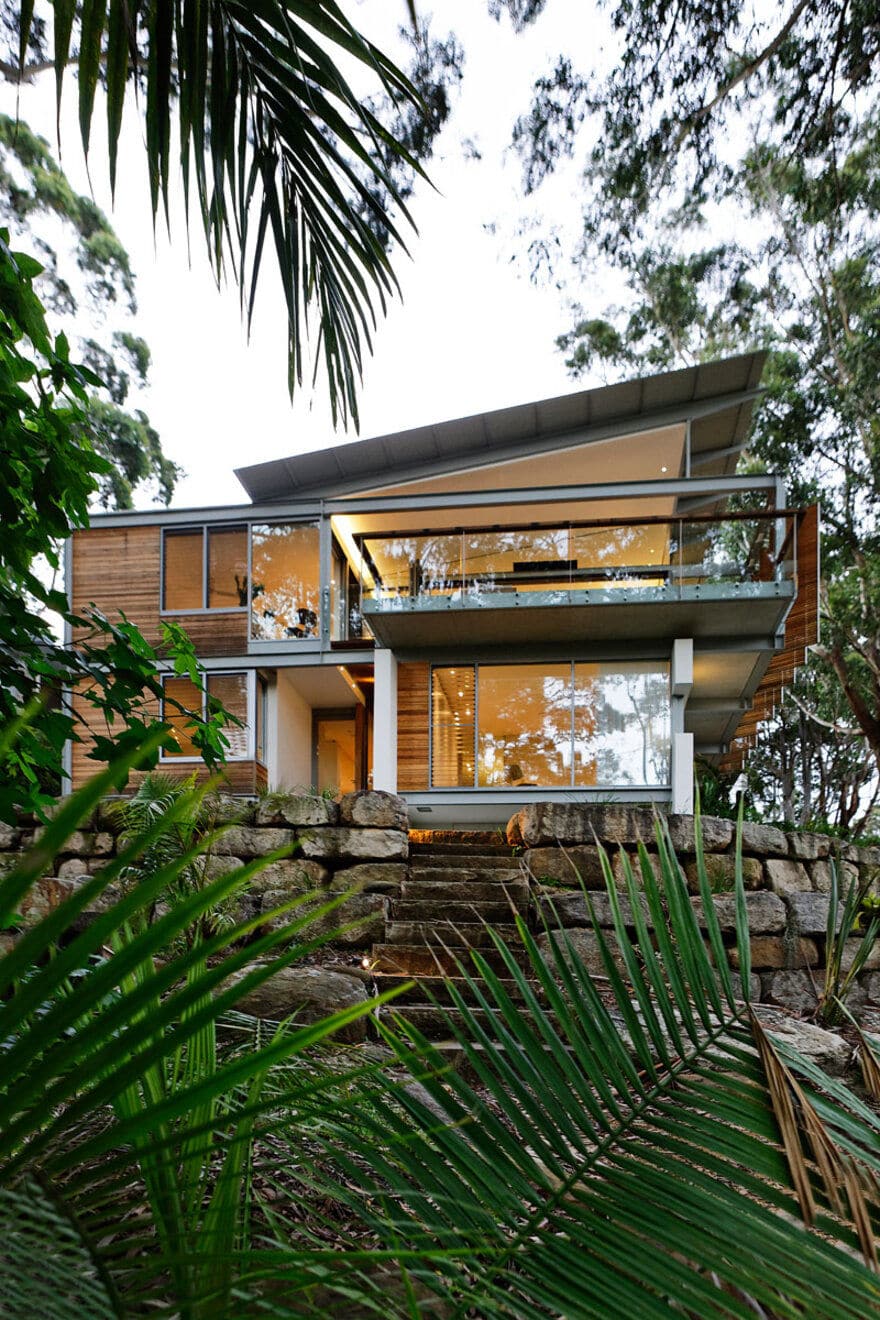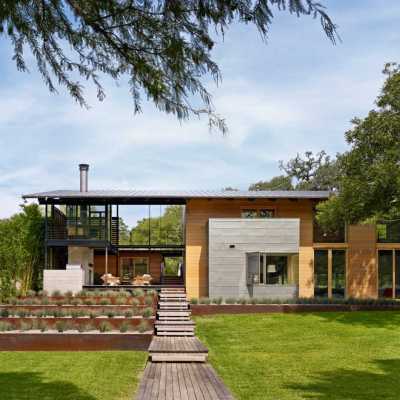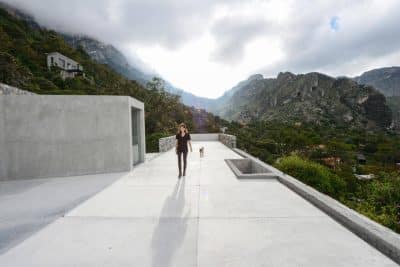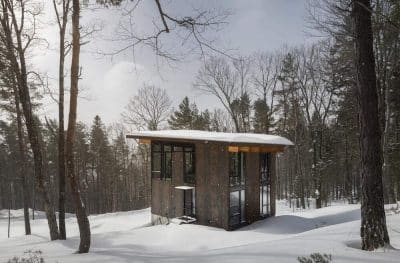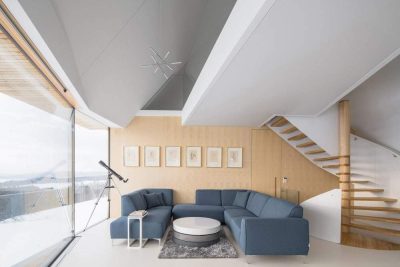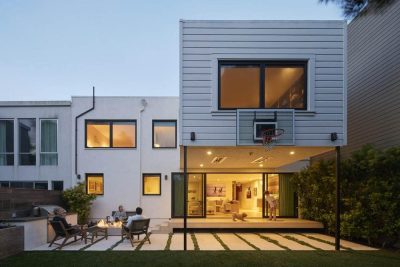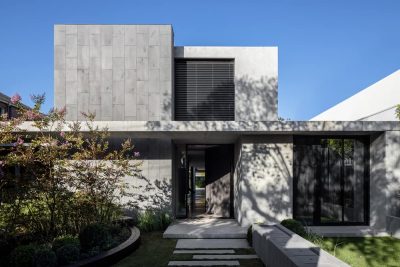Project: Casual Holiday Home – Avoca Weekender
Architects: Architecture Saville Isaacs
Location: Avoca Beach, Central Coast, NSW, Australia
Year 2019
Photographer: Kata Bayer
The Avoca Weekender is a casual holiday home along the Australian coast by Architecture Saville Isaacs. A place where extended family and friends from afar can gather to create new memories. Robust enough for hordes of children, yet with an element of luxury for the adults. Referencing the unique position between sea and the Australian bush, by means of textures, textiles, materials, colours and smells, to evoke a timeless connection to place, intrinsic to the memories of family holidays.
Flexibility extends to opportunities for multiple activities: covered outdoor rooms, open living/dining zone, enclosed rumpus. Internal spaces delineated by timber spine formed by the timber walkway and vertical post screen, continuing down the suspended stairs under the kitchen island and out.
The house takes advantage of its orientation and bush setting, with sunlight, privacy and diagonal views modulated by pivoting timber screens.
Internal elements are extensions of architecture. Joinery is used as space making elements (timber screen wall folds over as support for benchtop). Contrast of solid textures, white linear planes, rhythms of timber posts, smooth polished concrete, steel and glass against rough sawn wire-brushed timber create drama that animates the interiors.
Focus is on tactile quality of materials: a consistent palette of polished concrete, waxed recycled wire-brushed tallowwood, textured white laminate joinery – selected for robustness, low maintenance and recyclability. Low VOC, non-toxic materials and finishes, hydronic floor heating and cross ventilation ensure a healthy indoor environment.
The integrated interior furnishing concept was to focus on palette of natural materials and finishes, locally sourced, designed and made. These choices being environmentally responsible and brief responsive by blending into and creating an emotive response to the Australian bush.
It focuses on the interrelationship with surrounding environment, volumetric quality, light enhanced sculpted open spaces, and tactile quality of materials. The design promotes the unity of architecture and interiors. It works with the elements of materiality, space, volume and light seeking to achieve a sense of peace and tranquillity.

